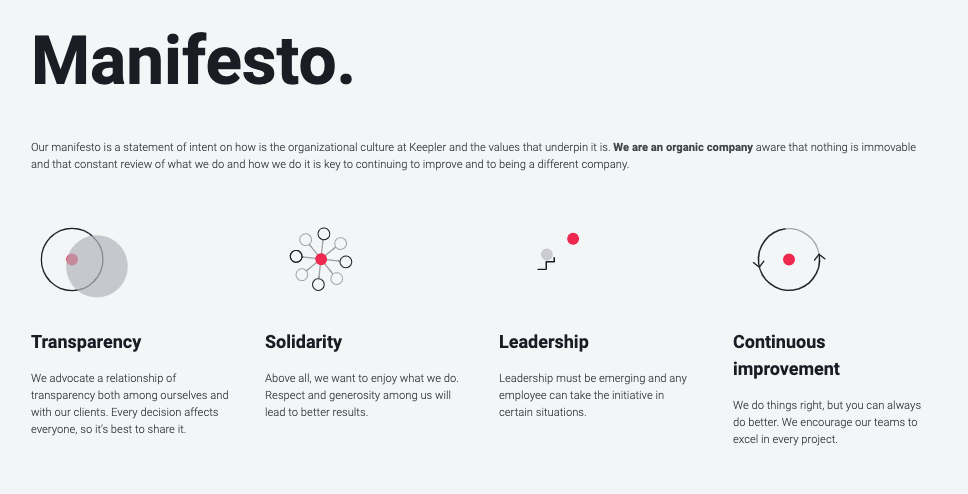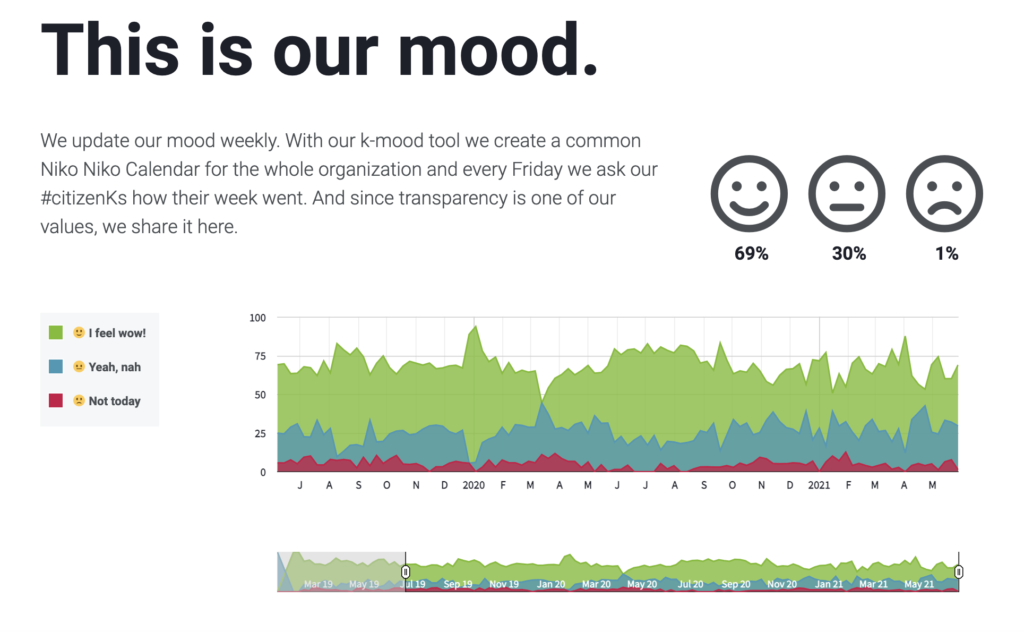A true story of how Management 3.0 can be integrated into an organization right from the startup phase. Pedro Serrano, Agile Coach, explains how Management 3.0 influenced the company culture – and how it all started with a Management 3.0 workshop.

Keepler is a Spanish company that was born three years ago (in March 2018). Keepler’s mission is to develop data products in cloud environments with Agile methodologies, a software company specialized in the design, development and operation of Data Products based on public cloud platforms.
Today, Keepler has 100 people in Spain and Germany and the plan is to go to other European countries such as Portugal in the short term.
From the beginning, we decided to have a company that differed culturally. At that time we were 10 people and some of us had attended Management 3.0 Workshops in Spain. We found those workshops to be very inspiring and that’s the reason why we decided to apply some Management 3.0 practices to establish a flat and self-empowered organization.
The goal was clear:
Create an inspiring and motivating behavior for every CitizenK (the way we call Keepler’s employees).
Here some examples of Management 3.0 practices we are using:
Moving Motivators ⁽ⁱ⁾
This is the first technique that we used at Keepler and it was very influential because after this a lot of habits emerged, aligned with our mindset. When we were ten people we had to decide what kind of culture we wanted for Keepler so we used a modified version of the Moving Motivator technique. Instead of prioritizing intrinsic motivators, we prioritized values and as a result, we created Keepler’s values and Keepler’s manifesto.
Values List ⁽ⁱ⁾
The list of Management 3.0 values was very useful to decide what Keepler’s values would be. As a result, we decided to have four values: Transparency, solidarity, leadership and continuous improvement.

Kudo Cards ⁽ⁱ⁾
We truly believe in transparent and honest feedback. We’ve implemented an internal tool to give kudos to other CitizenK. The process is simple: You have to fill a form saying who is going to receive the Kudo and why. Once you send the form an email will be in the receiver’s inbox with the Kudo.
Niko-Niko Calendar ⁽ⁱ⁾
Every Friday a chatbot will ask you how you feel in Keepler and, what you want and why. This is our way to implement the Niko-Niko Calendar. In this way, the People’s circle will check the global mood status and if it identifies something wrong, it will try to help as soon as possible.

Open Salary Formula ⁽ⁱ⁾
This might be the most important Management 3.0 practice we use. At Keepler, we have a public mathematical formula that calculates every CitizenK’s salary. This is something you can use both internally (if you want to calculate your salary in a professional path) and externally (in case you would like to join Keepler). There are versions of the calculator depending on the country you work from (so far Spain and Germany) and you can find the calculator here. We started with this technique from the beginning.
We talked about it in the Management 3.0 Blog three years ago.
Self-empowered teams
We believe that self-empowered teams is the best way to have a happy and motivated team. This concept is aligned with the Management 3.0 philosophy and we discovered that during our workshop. For this reason, we decided to implement this using Holacracy’s concepts such as circle, link and driver. As a result, you are not going to find bosses of hierarchies at Keepler. To be honest, there is only one hierarchy: The CEO and the rest of the organization, and that’s all. Every self-empowered team (circle) makes decisions regarding the need (driver) they are dealing with and that’s how things are run (explained in a simplified way).
As you can imagine, this doesn’t finish here. We think we’ll have to adapt to some situations in the future and obviously we’ll have to change things. The good news is that we think we’ve created an adaptable foundation that will be very useful when we have to face that. And as you can see, this has a lot to do with Management 3.0.

